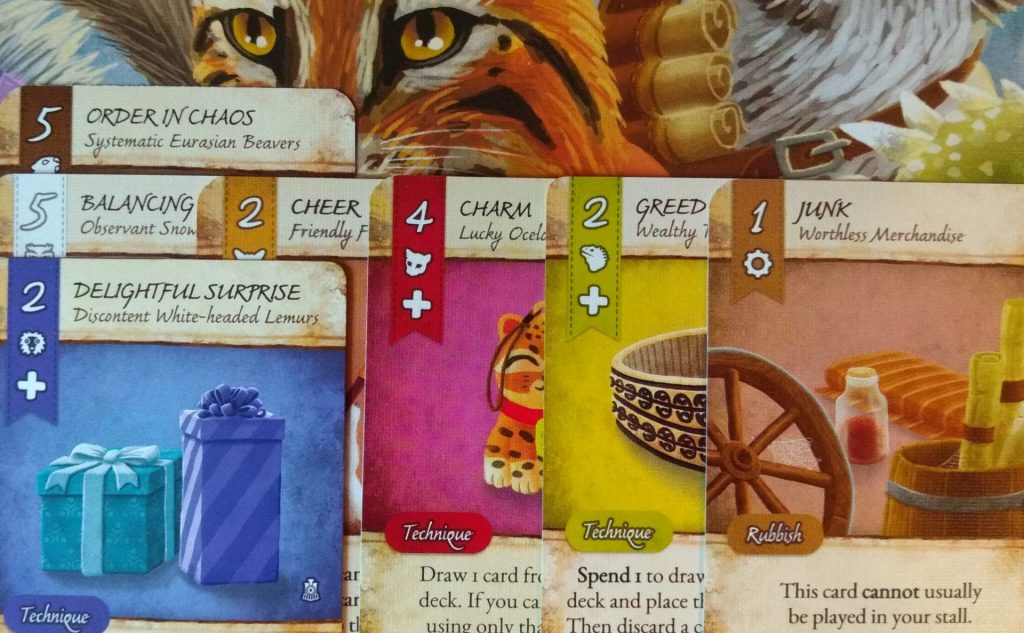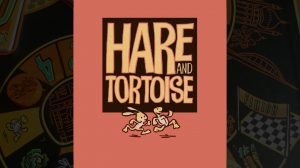Here at Meeple Mountain we’re passionate about tabletop games – it’s why we love writing about them. But we each have our own interests away from the hobby as well.
When I’m not writing about board games I run a science communication website using haiku to explore and share the latest scientific and mathematical findings. The Sciku Project is a library of science haiku (sciku) written by contributors from around the world, and has recently featured haiku on topics such as moving moss balls, iron rain, and racial birth weight differences.
Haiku are Japanese poems first developed in the mid-sixteenth century that, in English, traditionally consist of 17 syllables, presented across three lines as 5, 7 and 5 syllables (Japanese sound units, on or morae, tend to be shorter than English syllables and the haiku is written in a single line). Haiku also feature a seasonal reference (a kigo) and juxtapose images using a cutting word (a kireji). Any, and sometimes all, of these ‘rules’ have been broken by haiku poets over the centuries.
Haiku capture events, occasions, thoughts and feelings in a few brief words. Their direct language and conciseness gives the reader space to create their own mental imagery. They can be humorous, reflective, beautiful, and questioning, letting the writer and the reader explore a moment together.
I write about board games. I write haiku about science. Sometimes interests collide. Sometimes it’s interesting to explore things you love from a different perspective. I wanted to use haiku to capture feelings and thoughts about various board games. These aren’t strictly traditional haiku, only a few have a deliberate seasonal reference and not all include a juxtaposition of ideas, but I’ve stuck by haiku’s most well-known ‘rule’ – they’re all seventeen syllables and three lines.
And where better to start than with one of my all-time favourite games and the game that started my board game journey…
Carcassonne
Roads crease verdant plains.
Cities bud, bloom. Monks appear.
Farmers relaxing.
Carcassonne is one of the most successful and important gateway games in the hobby. Players take turns placing tiles to create the region of Carcassonne in France, using meeples to score points by completing cities, roads, monasteries and, at the end of the game, fields (claimed by lying a meeple down). Carcassonne is the subject of much Meeple Mountain love; check out our discussion of Carcassonne, our Carcassonne Strategy Guide, our review of the Carcassonne Android App, and our epic History and Celebration of 21 years of Carcassonne!
Splendor
Collect poker gems
Aim for cardboard royalty
A three-tiered pathway
The essence of engine-building, Splendor is as snappy as it is straightforward. Collect gemstones, purchase cards that give you more gemstones and sometimes points, first to 15 points wins. Yet this simplicity hides sharp and addictive gameplay that escalates at a ferocious pace. Check out Tom’s review, nay ode, to Splendor.
Scythe
Harvest tool in hand
the peasant looks up, weary.
Mech passes. He shrugs.
Oh the artwork! Oh the gameplay! Oh the mechs! Jamey Stegmaier’s magnum opus is one of the most evocative and satisfying board games ever created, a game of economic development, exploration and hulking mechanical war machines. It’s no wonder that Scythe ended up topping Kurt’s 100 Most Important Board Games of the 2010s list. Check out our review of Scythe.
Ticket to Ride
Collecting rainbows
Claimed routes crack the continent
Ding ding! Tickets please!
All aboard for one of the most successful board games of all time! Ticket to Ride is a modern classic, combining set collecting and route building with simple rules and quick turns to produce a game that is accessible and occasionally ruthlessly competitive. Check out Ashley’s love letter to Ticket to Ride.
Dale of Merchants Series

The Dale of Merchants games are a series of deck-building games that pack a ton of innovation and character into their small boxes. Players are animalfolk merchants racing to set out their stalls by playing card stacks of increasing value, a mechanism that sees players removing some of their best cards from their decks in order to win. Check out our review of Dale of Merchants 3.
Evolution: Climate
Watercolour feast
Self-contained ecosystem
Suddenly too hot
Evolution: Climate is one of the most gloriously beautiful games ever created. The stunning artwork by Catherine Hamilton enhances a fascinating game where the whole tone and experience changes with the characteristics of the different species created. Cooperating herbivores, intelligent scavengers, symbiotic carnivores and everything in between fight for survival in the face of limited food and an ever-changing climate. Just watch out for that meteor!
Tokaido
Meditative jaunt,
savour experiences.
KEEP UP AT THE BACK!
Ostensibly, Tokaido is a relaxing game of travelling Japan’s East Sea Road, taking in the sights, bathing in hot springs and sampling local delicacies. Yet it hides one of the greatest contradictions between board game theme and mechanics. You. Can. Not. Linger. There’s no dawdling on the path between Kyoto and Edo (modern-day Tokyo) as the player loitering at the back of the group always takes the next turn, driving the tourists ever forwards. Still, whilst your bath in the hot springs may only last a few seconds, you can take as much time as you like reading Jim’s review of Tokaido.
The Mind
We are of one mind
card follows card follows card
numbers ascend – Doh!
Is it a game or is it magic? To win The Mind players simply need to place cards in a central stack in ascending numerical order. The only hitch? They aren’t allowed to speak or signal what they have, so knowing when to play your next lowest card comes down to… telepathy? You’re welcome to pluck our opinion of The Mind directly from our brains or you can check out our review of The Mind.
Bananagrams

Some games are slow and stately, asking the players to ponder every possible move and counter-move. Bananagrams is not one of those games. Frantic and unruly, Bananagrams tasks players with getting rid of their letter tiles as quickly as possible by making crosswords. What makes the game shine is the need to constantly rethink your plans, as every time someone shouts “Peel!” you’ll need to take another tile.
AuZtralia
The ochre outback
Unfathomable horrors
Trains will save the day!
Sorry Priscilla, you’re not queen of this desert! In AuZtralia players build train routes into the continent of Australia, mining for resources and fighting any Lovecraftian beasties they happen to stumble across. A melding of two very different genres (train route building and Cthulhu) AuZtralia works surprisingly well, providing a crunchy puzzle and some genuinely exciting thrills. Check out our review of AuZtralia.
Thanos Rising: Avengers Infinity War
Our heroes surround
a spinning ballerina
dreaming of jewels
The first of (currently) four ‘Rising’ games from USAopoly, Thanos Rising: Avengers Infinity War is a cooperative dice-rolling game that pits the players and their teams of superheroes against the titular villain. Thanos’ large figurine has an impressive table presence as he rotates to face segments of the playing area, dealing damage to any heroes found there and advancing in his quest to get those shiny infinity stones. You can read our review of Thanos Rising: Avengers Infinity War.
Terra Mystica
We can’t live like this.
Unsatisfied with our lot
we grab spades and dig.
The elements call nearby
offering power and points.*
Terra Mystica is one of the most well-respected games in the hobby, a high-point in Euro-game design and a dense box of wooden components to boot. Whilst it can seem intimidating at first, push through and you’ll discover a game of competing asymmetric races terraforming the world to suit their needs that absolutely rewards perseverance and repeated plays. Check out Kathleen’s Top Six Reasons why she loves Terra Mystica.
*This poem is actually a tanka, a Japanese poetic form that consists of an upper phase (three lines, 5-7-5 syllables) and a lower phrase (two lines, 7-7 syllables). I wanted to represent the link and disconnect of the cult and main game boards in Terra Mystica via the two distinct phrases of the tanka.
Want more board game haiku? Check out A Hat Hits The Ground: More Board Game Haiku!










